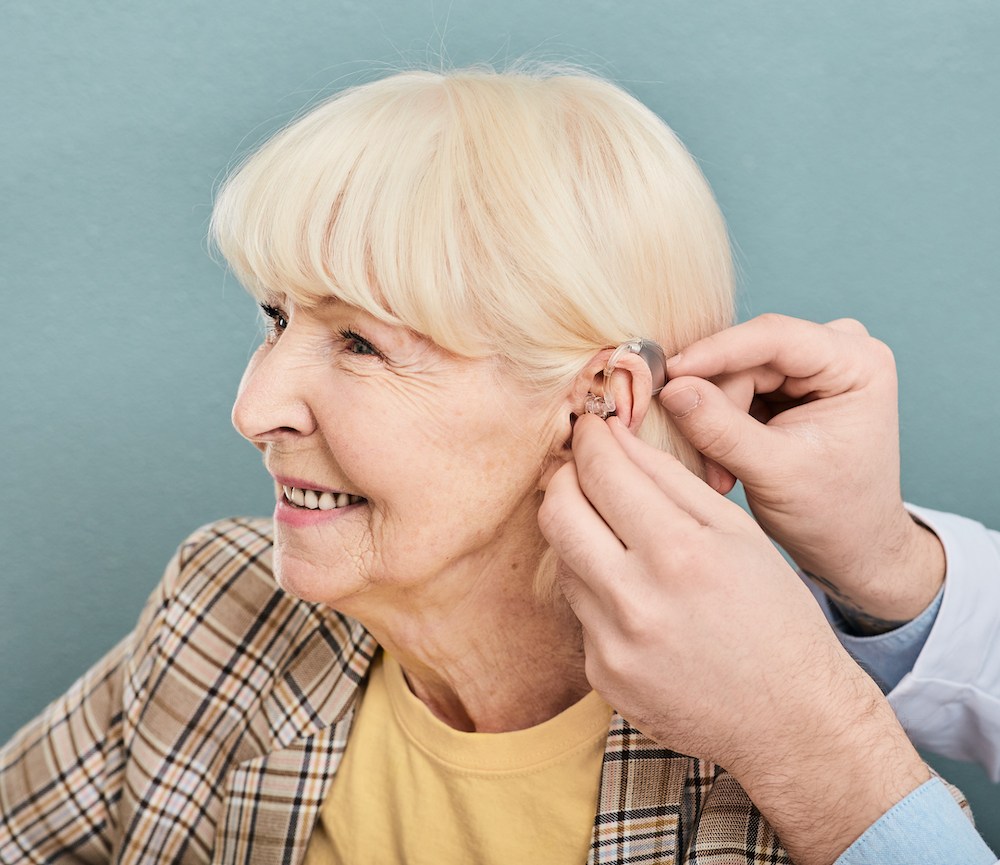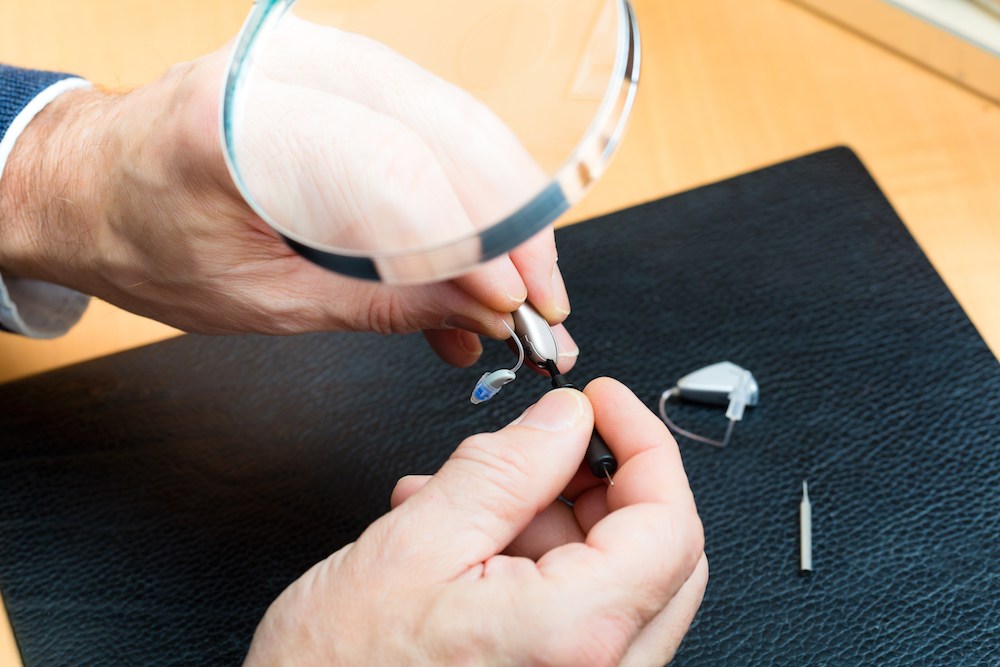The Impact of Autumn Weather on Hearing Aids
Autumn weather brings changes that can affect how well your hearing aids

By: admin | June 20, 2025
Spring brings warmer temperatures, afternoon rain showers and higher humidity levels that can affect how well your hearing aids perform. You might notice your devices acting differently during this season, perhaps seeming less responsive on particularly humid days or requiring more frequent attention to moisture issues. The combination of temperature fluctuations, increased moisture in the air and seasonal activities like gardening or outdoor events can present new challenges for your hearing aids.
Understanding how spring weather affects your hearing aids helps you take proactive steps to maintain their performance during this transitional season. Simple adjustments to your daily care routine and awareness of potential weather-related issues can help ensure your hearing aids continue working effectively when you need them most, whether you’re enjoying conversations on the porch, attending outdoor gatherings or simply going about your regular activities during the busier spring months.
Hearing aids work by capturing sound from the environment, processing it and delivering a clearer, amplified version into your ear. The process begins with the microphone, which picks up external sounds and converts them into electrical signals. These signals are then sent to the processor or amplifier. This is the core of the hearing aid’s function. The processor uses algorithms to analyze the incoming sound, adjust its volume and quality and filter out unwanted noise. It does all of this in real time, customizing the output based on your hearing profile and the listening environment.
Once the sound has been processed, it moves to the receiver, also known as the speaker. The receiver converts the processed signal back into sound and delivers it into your ear canal, either through a small speaker placed directly in the canal or via tubing in behind-the-ear models. Powering this entire process is a small battery or rechargeable power cell that fuels the device’s constant operation. Together, the microphone, processor, receiver and battery form a complete system that supports clearer hearing by boosting speech, reducing background distractions and working with the natural acoustics of your ear.
Hearing aids are built to function in a range of everyday conditions, but temperature fluctuations can still affect their performance. Extreme heat or cold can impact both the electronic components and the materials used in the device’s construction. For instance, cold weather can cause batteries to drain faster, especially traditional zinc-air batteries that rely on a chemical reaction involving oxygen. When the air is cold and dry, that reaction slows down, reducing battery life. On the other hand, heat can strain the battery by increasing internal pressure, potentially leading to swelling or leakage.
The internal components of hearing aids, including the microphone and amplifier, can also be affected by temperature changes. In colder conditions, condensation can form when you move between outdoor and indoor environments. This moisture can interfere with the electrical circuits or even lead to corrosion if not addressed. Some hearing aids now include nano-coatings or moisture-resistant materials to help prevent this kind of damage. Even so, it’s important to regularly dry the device using a hearing aid dehumidifier or drying kit, especially in cold or humid climates.
In hot weather, hearing aids may overheat if left in direct sunlight or worn during prolonged exposure to high temperatures. This can affect the plastic housing, making it brittle or causing warping over time. It can also reduce the sensitivity of microphones or degrade the performance of sound processors. Keeping your hearing aids out of places like a parked car or a windowsill and storing them in a cool, dry case when not in use helps preserve their function. Overall, while hearing aids are designed to be resilient, awareness of temperature-related risks can help extend their lifespan and ensure reliable performance.
Seasonal shifts introduce a mix of environmental changes that can affect how well your hearing aids function. In the spring and summer, increased humidity and exposure to moisture become more common. Sweat, rain and even high humidity levels in the air can work their way into the tiny openings of your hearing aids, particularly the microphone ports and battery compartments. Over time, moisture can interfere with sound quality, lead to corrosion or cause the device to shut down unexpectedly. This is why many users rely on drying boxes or dehumidifiers more heavily during warmer months to keep their devices in reliable condition.
Fall and winter bring their own set of challenges. Sudden temperature changes from going outdoors to indoors can cause condensation to form inside the hearing aid casing. Dry indoor air from heaters can also increase static electricity, which may disrupt the sensitive electronics. In colder months, battery performance can drop significantly, leading to shorter usage times or unexpected shutdowns. Some users may notice that their devices behave inconsistently in the cold, especially if they’re using traditional zinc-air batteries rather than rechargeable options, which tend to handle temperature swings a bit better.
All year long, seasonal changes can also affect how you store and care for your hearing aids. During high pollen seasons, dust and airborne particles can build up in microphone openings or tubing. In winter, scarves and hats may brush against behind-the-ear devices, creating extra friction or muffling sound. Paying attention to how the environment changes with the seasons can help you adjust your cleaning and care routines accordingly. This helps maintain both the performance and longevity of your hearing aids, no matter what the weather brings.
Pollen can absolutely interfere with hearing aids, especially during peak allergy seasons when it’s more concentrated in the air. The tiny particles can get caught in microphone openings, receiver ports or tubing, depending on the type of hearing aid you use. Over time, this buildup may muffle sound, distort audio quality or even cause temporary malfunctions if not addressed. For people who wear behind-the-ear models, pollen can also settle around the earmold or tubing, which may lead to irritation or increase the need for more frequent cleaning.
In addition to mechanical issues, seasonal allergies triggered by pollen can indirectly affect how your hearing aids perform. Congestion or inflammation in the ear can alter how sound travels through the ear canal, making it feel like your devices are less effective even if they’re working normally. Regular cleaning and maintenance during high-pollen months can help keep your devices functioning well. Using a soft brush or cloth to wipe down your hearing aids daily and storing them in a protective case when not in use can reduce the impact of airborne particles.
When a hearing aid is exposed to moisture, several specific things can happen inside the device that affect how it performs. Moisture can seep into small openings, like the microphone ports or battery compartments, and cause corrosion on metal components. This corrosion may interfere with electrical connections, leading to static, distorted sound or total device failure. In digital hearing aids, even a small amount of moisture can impact the internal circuitry, causing it to short out or behave unpredictably.
Humidity and moisture can also clog sound outlets with condensation or mix with earwax and debris to create blockages. This can reduce volume, clarity or introduce a muffled or “underwater” sound quality. Moisture trapped inside tubing or earmolds, especially in behind-the-ear models, can also prevent sound from traveling properly to the eardrum. Over time, if moisture exposure is frequent and unchecked, these problems may not only become more frequent but also harder to reverse, requiring professional repair or replacement. Using drying containers or dehumidifiers designed for hearing aids can help pull out excess moisture and preserve functionality.
As the weather warms up and more time is spent outside, outdoor sounds can create challenges for hearing aid users. Everyday noises like birds chirping, conversations or the breeze through trees might seem pleasant, but they can also compete for your attention and make it harder to focus on what you want to hear.
Wind in particular can be disruptive. Because hearing aids use tiny microphones to collect sound, a strong gust can easily overpower speech or other important sounds. Many devices now include features that help reduce the impact of wind and manage background noise more effectively. If you’re noticing more interference during outdoor activities, it’s worth checking in with your audiologist to fine-tune your settings and make sure your hearing aids are working well in all environments.
Spring is a perfect time to give your hearing aids some extra care. With a few simple steps, you can ensure that your device is ready to handle the season’s unique challenges. First off, create a checklist for regular maintenance of your hearing aid. This should include daily cleaning to remove any pollen or dust particles. Be sure to check for moisture buildup and if you notice any condensation within the device, use a dehumidifier to dry it thoroughly.
Next, be prepared for those sudden spring showers by always carrying protective gear like an umbrella or hat. If you’re caught in the rain without protection, immediately wipe off any wetness from your hearing aid using a dry cloth. It’s also a good idea to store your hearing aids in a protective case when not in use, especially if you’re heading out for a walk, gardening or spending time in damp environments. Consider scheduling a seasonal check-up with your audiologist, too. They can make sure your hearing aids are functioning properly and give them a professional cleaning, which can help prevent long-term damage and keep everything running smoothly.
During allergy season, regular cleaning becomes even more important for keeping your hearing aids working well. Pollen, dust and other airborne allergens can easily settle into small openings like the microphone ports and sound outlets. If left unchecked, these particles can block sound, cause feedback or reduce the clarity of what you hear. Since hearing aids sit close to the skin and hair, they also pick up sweat and oils, which can mix with pollen and form a sticky residue that’s harder to remove over time.
Consistent cleaning helps prevent buildup that might affect both the performance and lifespan of your device. A quick daily wipe with a soft, dry cloth can make a big difference and using tools like a cleaning brush or wax loop can help clear out harder-to-reach areas. For those dealing with heavy allergens, a hearing aid dehumidifier can also help by drawing out both moisture and particles.
Being aware of how seasonal changes impact your hearing aids gives you the chance to make small but important adjustments to your care routine. Whether it’s drying them out after a rainy afternoon, storing them safely when you head into the garden or giving them a quick daily clean to remove moisture and debris, these efforts help keep your hearing consistent and clear. Spring might bring unpredictable weather, but your hearing aids don’t have to be unpredictable with it.
If you’ve noticed changes in how your devices are performing or have questions about how to care for them as the weather shifts, we’re here to help. You can always reach out to Professional Hearing Aid Associates in Topeka, KS at (785) 940-4101. We’re happy to check your devices, offer cleaning suggestions or make sure everything is working the way it should, so you can stay focused on enjoying the season.
Tags: hearing aid repair, hearing aid services, hearing aid styles

Autumn weather brings changes that can affect how well your hearing aids
By: admin | October 20, 2025

Good hearing lets you catch the punchline of a joke, hear your
By: admin | July 29, 2025

Spring brings warmer temperatures, afternoon rain showers and higher
By: admin | June 20, 2025
